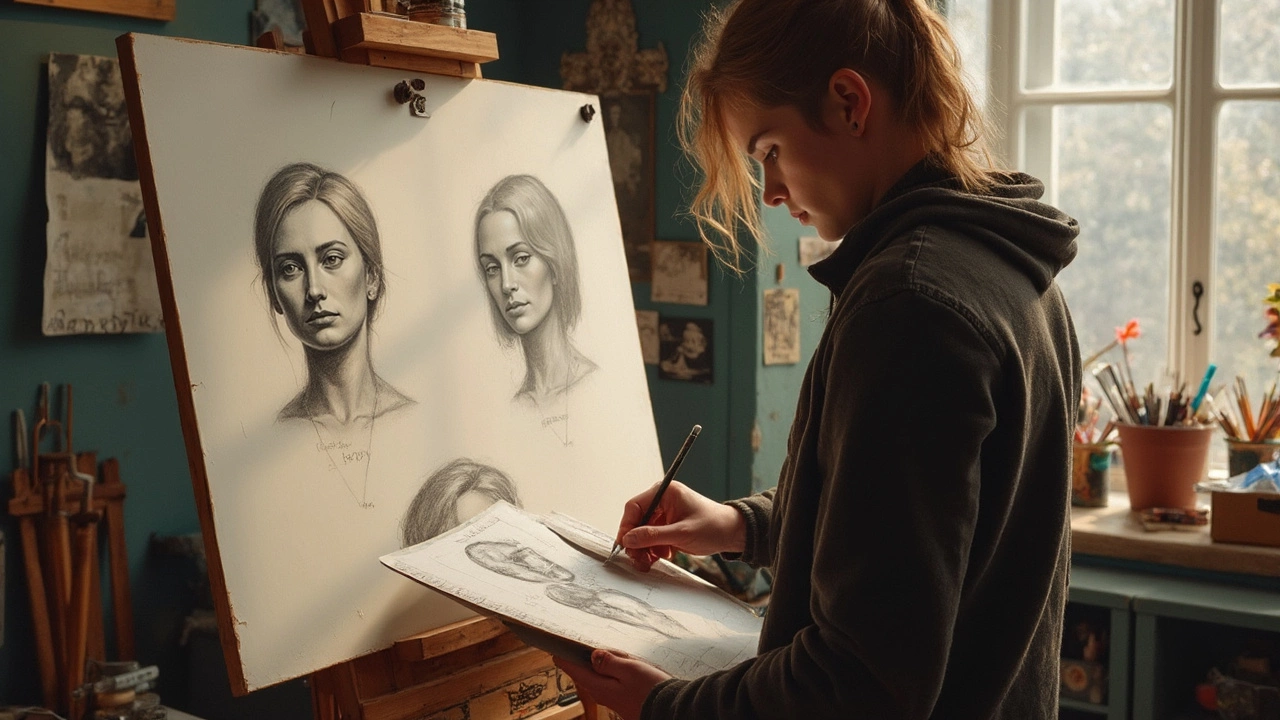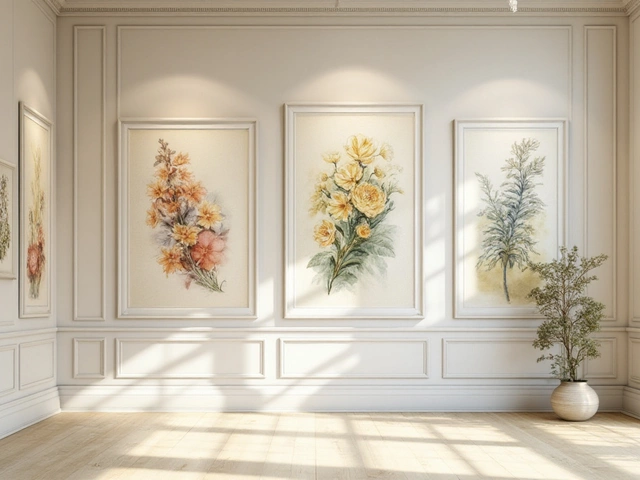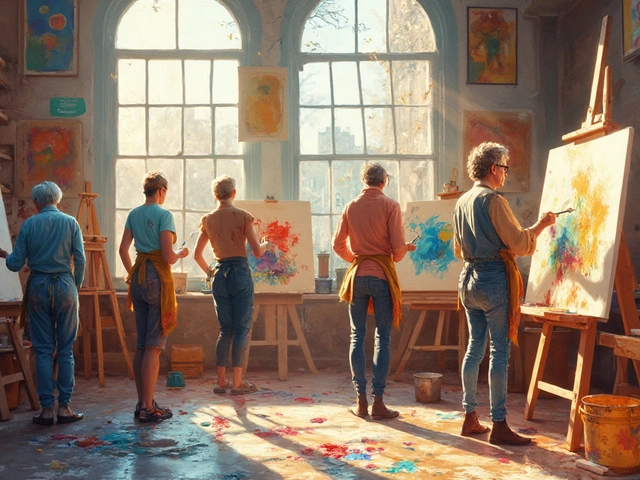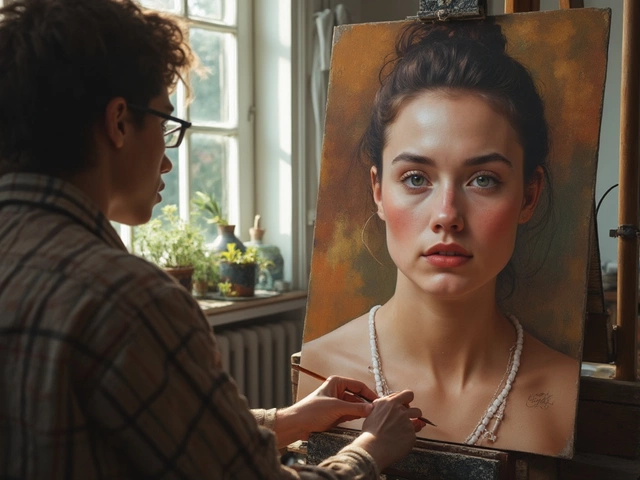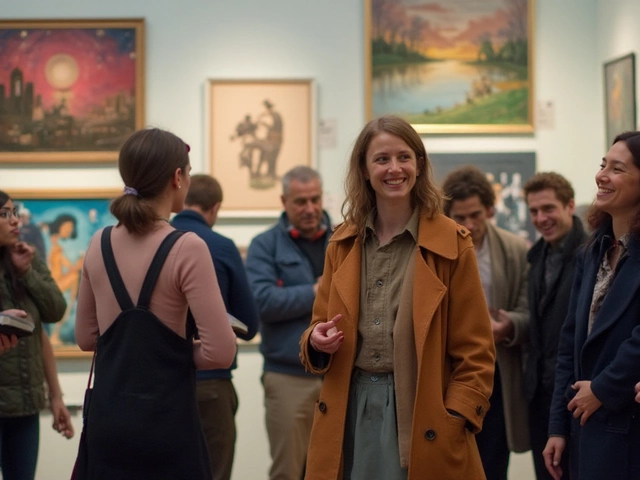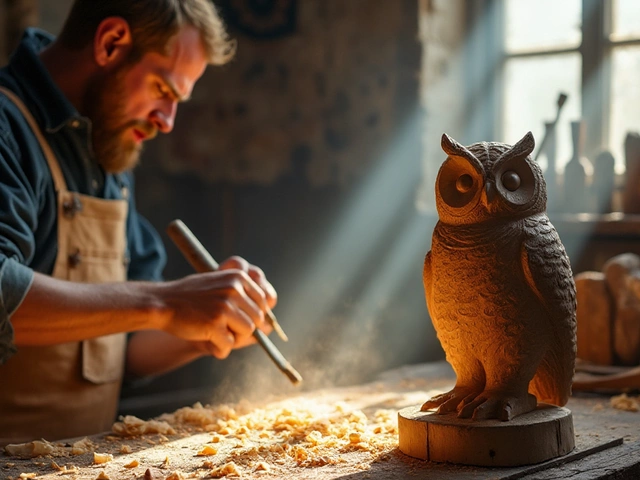Ever look at your portrait and wonder why something just feels off? Nine times out of ten, it's the head size that throws things out of whack. Getting this right is a lot trickier than it sounds—even top artists double-check their proportions all the time. A head that's too big can make the subject look cartoonish, while a small one gives off weird, alien vibes.
The good news? There are straight-up tricks and classic ratios you can use, so you don’t bumble around guessing. Painters have mapped this out for centuries, and there are easy ways to check your work at every stage. You don’t need anything fancy—sometimes, all it takes is a pencil, your thumb, or even the edge of a brush to keep your portrait on track.
- What’s the Standard Head Size in Portraits?
- Why Proportions Matter More Than You Think
- Practical Tips to Measure and Adjust Head Size
- When and How to Break the Rules
What’s the Standard Head Size in Portraits?
If you’ve ever felt lost figuring out how big the head should be in a portrait, you’re not alone. There’s a classic rule that artists swear by: in most portrait paintings, the average adult head is about 1/7.5 to 1/8 of the total body height. But here’s the twist—in actual head-and-shoulders portraits, what really matters is the size of the head on your canvas or paper.
The head, from chin to crown, often takes up about two-thirds of the height of a classic portrait composition. In a standard 16" x 20" canvas for portraits, the measured head is usually around 9 to 11 inches tall. Big surprise: even famous portrait painters like John Singer Sargent and Leonardo da Vinci used similar ratios for natural results.
But faces come in all shapes, and so do styles. Some artists, especially beginners, accidentally shrink or stretch the head. Here’s what’s common for an adult:
- The head is about five ‘eye widths’ wide (the width of one eye fits across the face five times).
- The eyes sit halfway between the top of the head and the chin—don’t let hairlines mess you up here.
- Average adult face height: 9 to 10 inches (23-25 cm). For kids, heads are relatively larger compared to their bodies, about 1/4 of their height.
Check out this cheat sheet on standard head proportions for portraits:
| Age | Head Height vs. Body | Common Canvas Head Size |
|---|---|---|
| Adult | 1/7.5 to 1/8 | 9 - 11 inches |
| Teenager | 1/6.5 to 1/7 | 8 - 10 inches |
| Child | 1/4 to 1/5 | 7 - 9 inches |
Once you know these numbers, grab a ruler or measure using your pencil to compare. Don’t forget—go for natural, not ‘perfect.’ If a head looks right to your eye, you’re on the right track. It’s all about balance. And if you want your work to pop in portrait painting, nail those head proportions before worrying about the fancy stuff.
Why Proportions Matter More Than You Think
If you’ve ever stared at a portrait and felt something was just… off, odds are the proportions are out of whack. It’s not just about making the head fit the canvas. When the head is out of proportion, everything else in the painting starts to look wrong, too. Our brains are hardwired to recognize faces, so even the tiniest mistake with the head size in a portrait painting stands out right away. Studies from psychology labs say that people can notice an error as small as a couple of millimeters when it comes to faces.
What’s wild is how much artists stick to the measurements. The old-school rule is this: in a classic portrait, the average adult head is about one-eighth of the total body height. Even when you’re only painting the head and shoulders, this ratio helps you not make the head look like a balloon or shrunk by a laundry mishap. It’s why drawing classes almost always start with proportion basics before anything else.
You can see the difference when you line up famous portraits:
| Painting | Artist | Head-to-Body Ratio |
|---|---|---|
| Mona Lisa | Leonardo da Vinci | 1:7.6 |
| Self-Portrait | Rembrandt | 1:8 |
| Girl with a Pearl Earring | Johannes Vermeer | 1:7.9 |
If you ignore these rules, you risk making your portraits look amateur. The eyes might end up too high, the chin too low, or the face might feel squished or stretched. All of this instantly takes viewers out of the painting—no matter how good your colors or brushwork are.
Another thing: people judge skill based on how well you nail these invisible rules. Recruiters in art schools or illustration gigs sometimes flip through portfolios just to see who understands proportion. So even if you develop your own style, understanding basic head size is the groundwork for believable and appealing portraits.
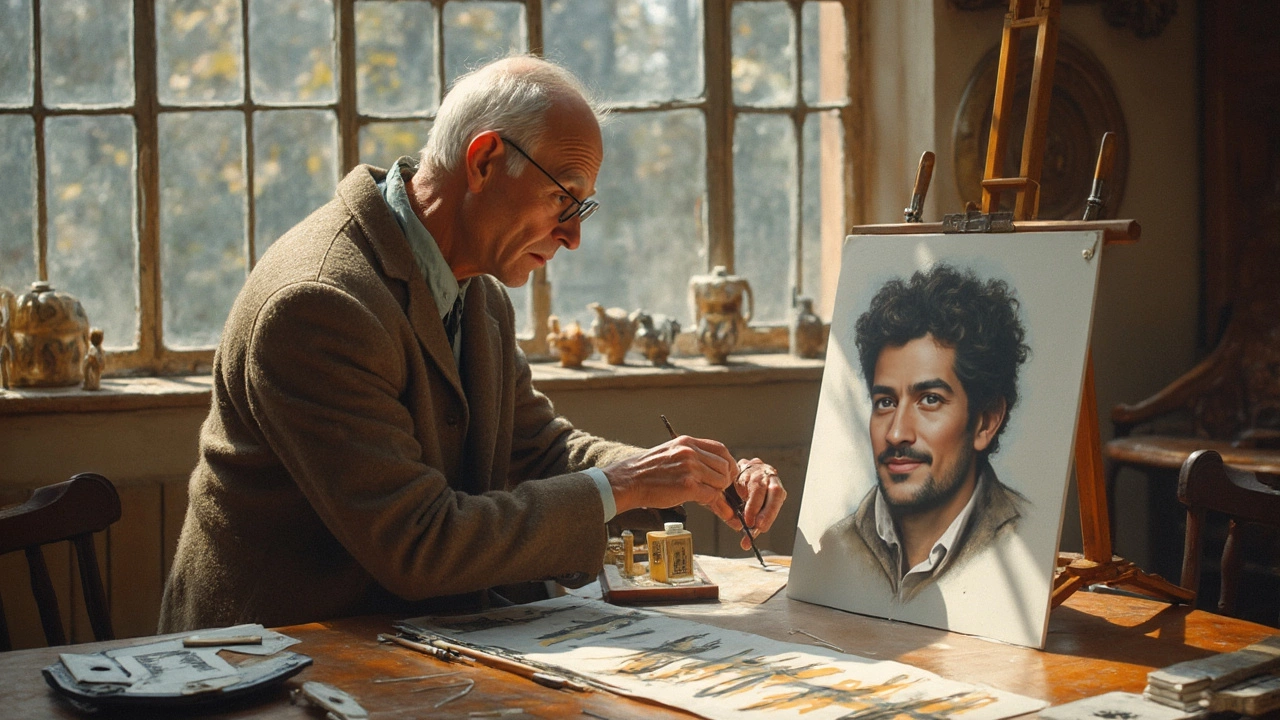
Practical Tips to Measure and Adjust Head Size
First thing—grab a pencil or a stick. When painters sketch from life, they usually hold it out at arm’s length, close one eye, and align the top of the stick with the highest point of the head. Slide your thumb to mark the chin. This gives you the actual head height, which you can then use as a unit of measure for the rest of the body or canvas. This isn’t just a classroom exercise; it’s what pros have used since the Renaissance.
There’s a classic rule: the average adult head is about 1/7.5 to 1/8 of the total body height. But in portrait painting, you care most about relationships. For a head-and-shoulders painting, the head should take up one-half to two-thirds of the vertical canvas space. Too big, and the face crowds everything else; too small, and your portrait feels awkwardly empty.
- Portrait painting benefits a ton from using the grid method. Lightly draw a grid over your reference photo and your canvas. Match up the grid lines, and you’ll spot head size problems before you spend hours on details you’ll have to redo.
- Use a mirror. It’s crazy how a quick mirror check will reveal a head that’s way too big or too puny. Flip your drawing, step back, and look fresh—it’s like free quality control.
- Comparative measuring works: after you've blocked in the head, check it against the width of the shoulders, length of the face, and even the height of the features. Is the space between the eyes and chin making sense compared to the head as a whole?
- Use a piece of yarn or string if you’re working big. Rope it off for the top and bottom of the head, then move to other features. Instant reference, no guessing.
Still in doubt? Here’s a quick look at typical head sizes compared to canvas height for a head-and-shoulders portrait:
| Canvas Height | Ideal Head Height | Head as % of Canvas |
|---|---|---|
| 16 inches | 9-11 inches | 56% - 69% |
| 20 inches | 11-13 inches | 55% - 65% |
| 24 inches | 13-16 inches | 54% - 67% |
If the head ticks in well under half of your canvas or crowds right up to the top and bottom, it's time to adjust. Don’t sweat erasing or moving those initial lines—getting this part right makes painting way easier down the line.
When and How to Break the Rules
Rules are there to help, but no great portrait painting came from just playing it safe. Sometimes, breaking the classic head-size rules is exactly what gives your art its punch. Ever seen Picasso’s wild portraits? He made heads gigantic or tiny on purpose, and that's part of the reason his work grabs your attention. If you look up Kehinde Wiley or Jenny Saville, you'll spot how they bend the rules to create mood and drama too.
So when can you get away with exaggerating head size? Here are some real reasons artists go off-script:
- Stylization: Want that cartoon effect or to highlight innocence (think big heads for kids)? Go big. It’s a well-used trick in illustration and comics.
- For Emphasis: Making the head larger draws the viewer’s eyes straight to the face, making the emotion pop.
- Perspective Tricks: If the person’s leaning forward or you’re got a fisheye vibe going, the head actually should look bigger. This isn’t a mistake—it's foreshortening in action.
- Symbolism: In some cultures, big heads can hint at wisdom or power. African masks or old religious paintings use this on purpose.
Here's a quick look at how famous artists tweaked head sizes and what happened:
| Artist | Work | Head Proportion Tweak | Why? |
|---|---|---|---|
| Pablo Picasso | "Portrait of Dora Maar" | Larger, shifted features | Show emotion, break expectations |
| Jenny Saville | "Reverse" | Massive head, up close | Intensity, in-your-face realism |
| African Mask Makers | Various Masks | Oversized heads | Symbolize wisdom, status |
If you want to play with these ideas, just be sure you’re breaking the rules with a point. Test it out first—grab your sketchbook and try the same portrait with normal and oversized heads. Look at them side-by-side. Which grabs you? Which tells your story better?
Bottom line: every famous art movement has flipped the script on proportions at some point. Once you know what’s normal, you’ll know exactly how—and when—to break away from it.
